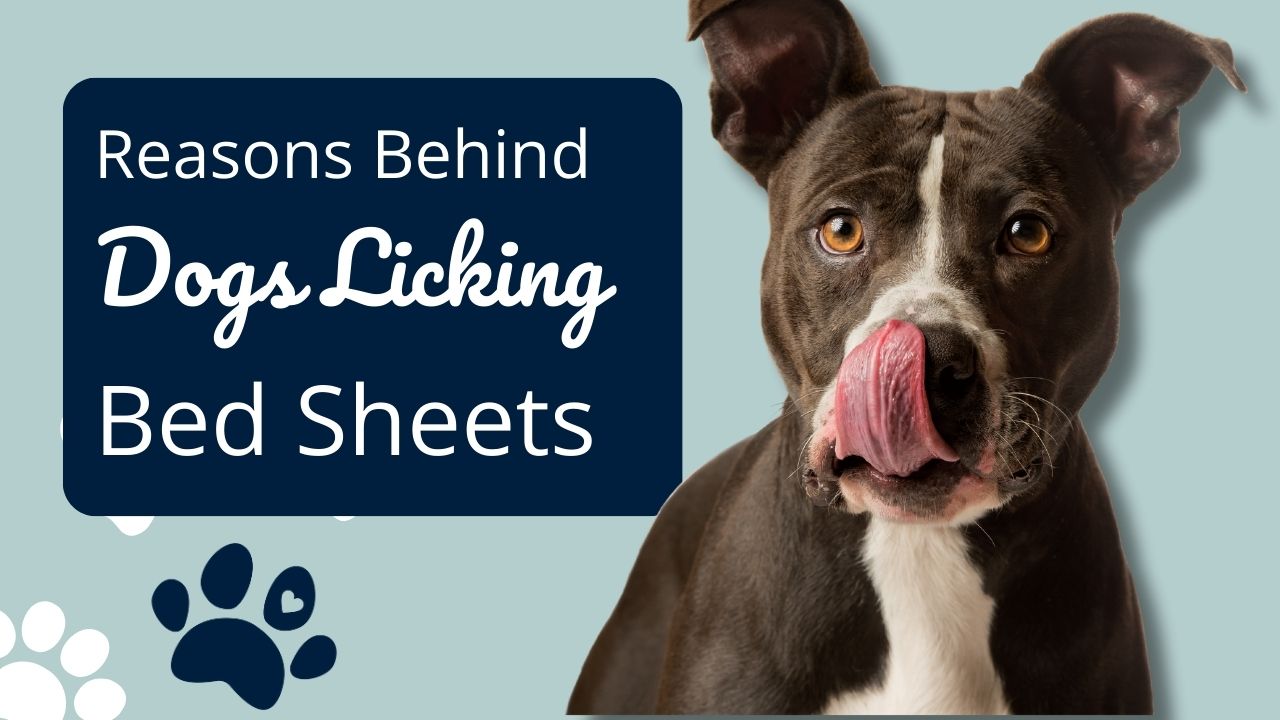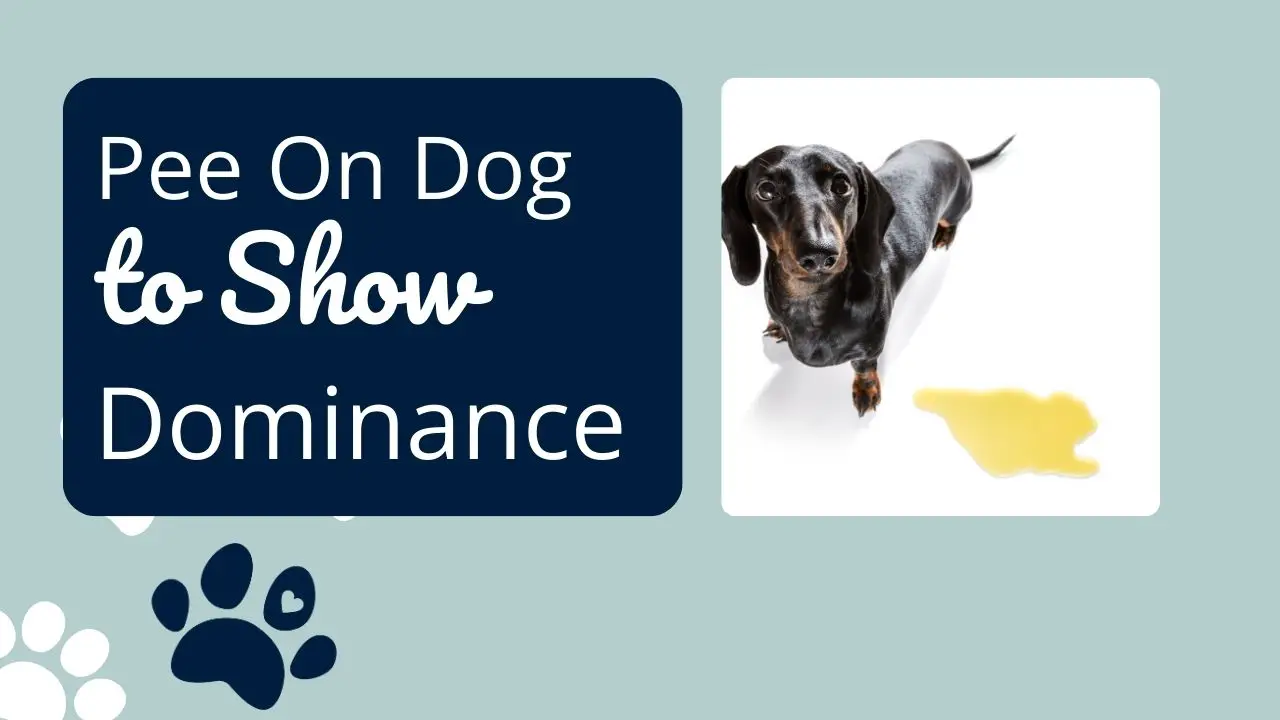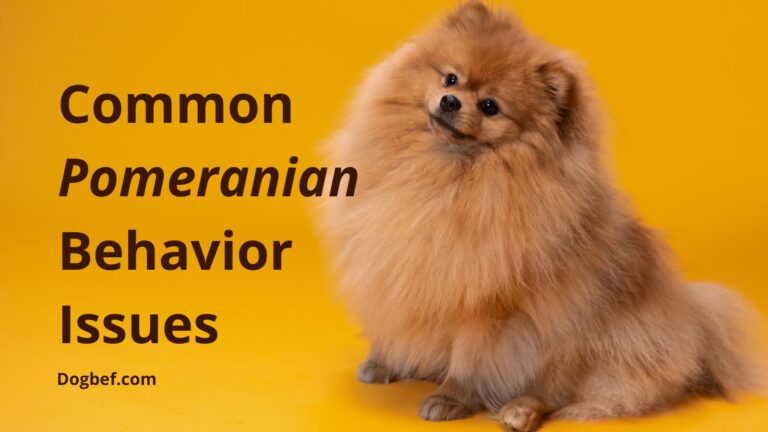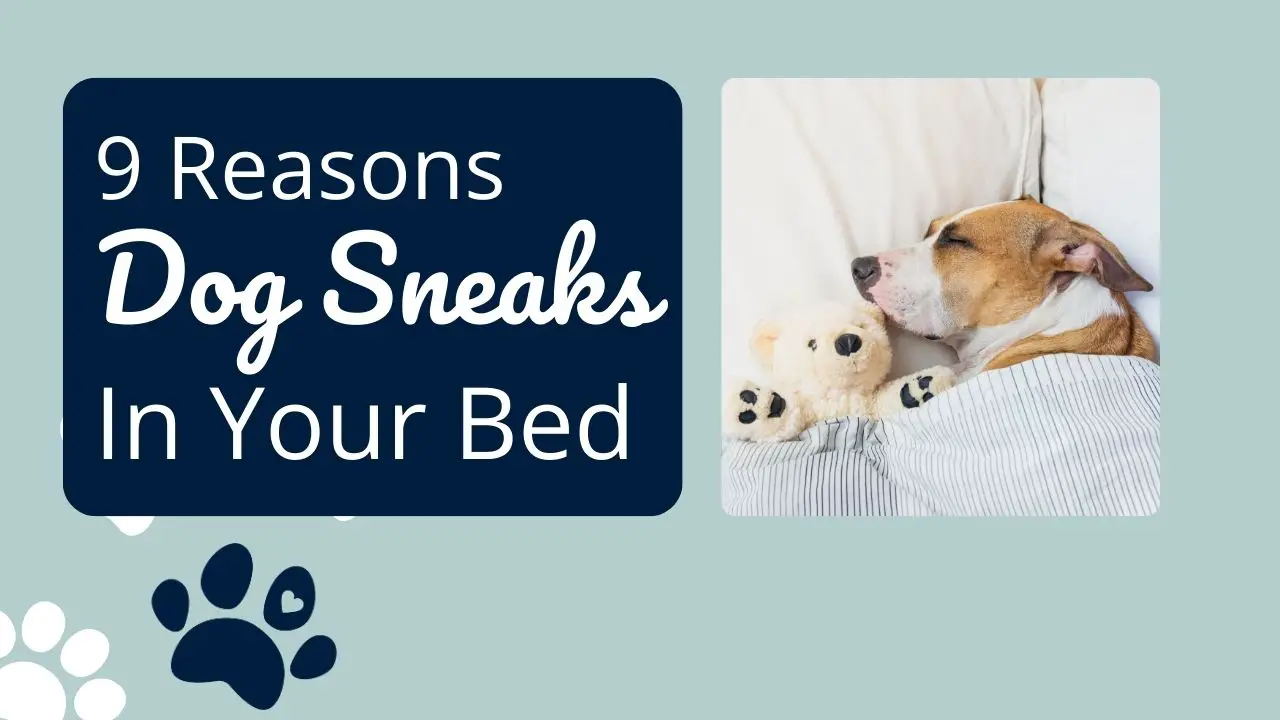“Dogs may lick bed sheets as a comforting and bonding behavior, reminiscent of their puppyhood when they licked their mother’s scent. It can also be a sign of affection, marking territory, or seeking your scent for reassurance.”
Dog behavior can perplex dog owners. One common habit for dogs is to try to lick and chew bed sheets and blankets. Though seemingly harmless, the underlying motivation often indicates a health or psychological issue needing attention. Sheet ingestion risks internal damage. Additionally, owners wish to curb the reinforcement of obsessive tendencies and save linens.
While reasons for the behavior vary, it likely stems from anxiety, stress, attention-seeking, medical problems, or simply boredom. Nonetheless, solutions exist. By understanding causation and implementing proper management, owners can address needs, provide enrichment, and train dogs to create healthy living environments where sheet licking is not needed to cope. This post explores sheet-licking motivations and solutions.
The Dog’s Licking Behavior: Why Dogs Lick Bed Sheets and Blankets
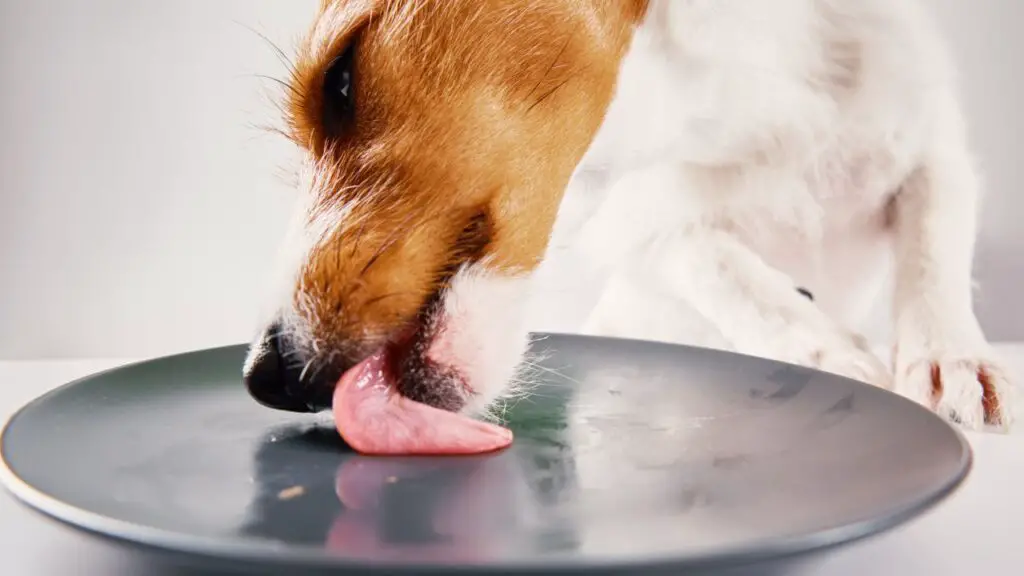
Dogs explore the world through licking. Their light, flickering tongues gather sensory information. Licking comforts dogs by releasing endorphins and relieving stress. These innate tendencies transfer onto bed sheets. The fabric evokes home comforts. Its texture and microbes interest dogs. Linens hold human scents offering connectedness.
Sheets’ accessibility enables acting on urges easily. Up to 18% of dogs compulsively suck, chew and lick fabrics and it may dog scratching sheets. Various factors influence individual dogs’ likelihood, but inheritance, early life experiences, stress, and reinforcement of the behavior play a role in frequency. Overall, licking habits originate from canine instincts, individual variability, and environmental factors. Explore more reasons why your dog is licking your sheets and why dogs may also lick other things like blankets and pillows.
Reasons Why Your Dog Lick My Bed Sheets and Blankets?
The dog is licking behaviors to bed sheets and blankets for various reasons. The possible reasons why your dog starts licking bed sheets include habit peculiar, motivations like showing affection, alleviating anxiety, investigating smells, seeking attention, or just longstanding habits that dogs often lick drive to fixate on linens as oral outlets.
1. Affection
Canine companions form deep social bonds with human families. As pack animals, dogs show care through physical affection like licking. When redirected onto bed sheets soaked in owners’ scents, sheet licking becomes a soothing outlet for dogs to express fondness while calming anxious systems. Simply put, linen licking relays a comforting “I love you” from dog to human that builds interspecies bonds through positive association with a cherished object holding that person’s essence for dogs.
2. Boredom
When left alone for long periods, dogs may develop anxious energy and boredom. Finding stimulation, dogs target bed sheets as a dynamic landscape of stimuli to explore using lick-based sensory input. The sheets’ textures and smells offer novel complexity versus static toys to drain time. Soon linen licking becomes an obsessive self-soothing habit from chronic under-stimulation. Preventatively, providing varied enrichment activities tailors to dogs’ needs for mental exercise and curbs resulting in obsessive sheet licking.
3. Anxiety
Licking bed linens soaked in an owner’s scent can comfort anxious canines through chemical-releasing, self-soothing stimulation. This oral fixation redirects nervous energy into a familiar fabric holding the essence of a trusted human. As social creatures, canines cling to connections easing apprehension. Simply securing blankets around an anxious dog to facilitate access can work wonders by offering a portable outlet they can lick for support in times of stress.
4. Medical conditions
Persistent licking signals potential health issues requiring veterinary attention. Allergies, joint pain, dental problems, insect bites, rashes, and gastrointestinal distress can all manifest as excessive lick-based comforting. If licking frequency surpasses behavioral causes and enters compulsive zones, physiological discomfort may be to blame. Scheduling check-ups and lab tests can catch conditions prompting obsessive self-soothing early before they worsen.
5. Taste
A dog’s super nose detects intricate chemical notes undetectable to humans. When tracing aromatic compounds back to their source, dogs may find alluring tastes in sheets saturated with sweat and oils. Salt and proteins in bodily emanations can appeal to canine sensory drives. So while humans wash away “dirty” linens, dogs revisit them as flavorful menus offering insight into owners’ movements and intimate essences. Simply put, they like how we taste.
6. Attention
Dogs crave pack engagement. When left solitary for stretches, attention-seeking behaviors manifest to reconnect bonds. Sheet licking triggers human interaction. If rewarded through any eye contact or verbal/physical acknowledgment, the association of fabric chewing with human response reinforces the habit. Soon sheets become crying towels provoking reactions in absence. Preventatively, preempt licking by proactively giving dogs quality time and praise to satisfy connection needs.
7. Habit
Canine personalities cement early through repetitive behaviors. Pups separated young from their mothers often compulsively suck and chew for comfort. This oral fixation imprints as lifelong habits even if anxiety fades. Similarly, early sheet licking when bored or curious can stick over adulthood. Though not problematic itself, ingrained tendencies require awareness so environments can accommodate habits through access to appropriate, safe outlets like durable chew toys.
How to Stop Your Dog From Licking Your Sheets
To curb destructive sheet licking, address the root cause. Provide more exercise, affection, proper vet care, access to preferred toys, reward training, environmental enrichment, and supervision to improve wellbeing. Adjustments tailored to individual needs work best.
Diversify Your Dog’s Licking Options
Dogs instinctually like to lick for comfort and sensory stimulation. Providing acceptable, durable chewing outlets tailored to your dog’s preferences channels these needs safely. Kongs, ropes, treat balls, textured plastic toys, or food puzzles engage lick urges on appropriate surfaces while delivering mental enrichment. Routinely presenting fresh, rotating options prevents habituation to specific items so dogs remain actively engaged by novelty. This stimulates their minds and satisfies oral drives.
Ensure Adequate Exercise for Your Dog
Canine energy needs consistent output. When lacking sufficient physical and mental exercise, dogs grow restless manifesting in destructive habits like sheet licking. Make activities like leashed walks, hikes, playing fetch, or running in safe open spaces part of your routine. Aim for 30-60 minutes daily catered to your dog’s age and ability to burn energy reducing boredom tendencies significantly. Ultimately, a tired pup equals a well-behaved pup not inclined to obsessively lick linens.
Uncover Your Dog’s Anxiety Triggers
Excess licking signals a distressed dog’s self-soothing. Pinpoint root stressors by tracking what precedes outbreaks. Keep a schedule of environmental factors like storms, strangers visiting, or schedule changes that evoke unusual clinging, shaking, hiding, or chewing. Also note any changes in home layout, family members’ workflows, or health issues causing discomfort. Comparing circumstances around anxiety buildup highlights specific triggers vets and trainers can then help desensitize dogs to or teach coping mechanisms for.
Addressing Excessive Licking
If sheet chewing grows frequent and obsessive despite interventions, pursue veterinary exams. Persistent licking signals underlying conditions like allergies, pain, insect bites, infection, or other issues increasing discomfort and distress manifesting through fruitless self-soothing attempts. Identifying and treating medical problems brings relief improving well-being. Why dog licking its bottom after grooming?
Don’t Punish your dog for licking
Though frustrating, avoid scolding licking as that risks increasing anxiety, confusion, and distrust. Instead, interrupt behaviors briefly with a distracting noise then guide dogs to preferred toys and reward engaging with those. Build positive associations that sheets are off limits while other items earn treats and praise through consistent patient training suited to the individual.
Guide Your Dog’s Licking to Suitable Objects
Catch bed sheet chewing early by keeping enticing toys on hand. Distract from linens with squeaky playthings, Kongs stuffed with paste or frozen broth, textured rubber items, or any engrossing object they enjoy Gnawing those instead builds acceptable licking habits. Immediately rewarding replacement behaviors cement positive associations that their items are superior alternatives.
Be patient on the Bedsheet licking
Ingrained behaviors seen as harmless like sheet licking require patient, consistent adjustments tailored to individuals for actualizing change. Set realistic goals when interrupting habits. Thoughtfully shape steps dogs can follow and celebrate small wins using praise and treats to empower intrinsic motivation. In due time, perseverant owners often find even stubborn dogs choose better outlets and feel more secure.
When the dog isn’t licking the bedsheets and blanket?
When your dog can’t lick the bedsheets and blanket, it often signifies a sense of contentment and calm. Dogs may choose to avoid this behavior when they feel secure in their environment, have ample physical and mental stimulation, and are not experiencing stress or anxiety. When the dog doesn’t engage in excessive licking might be displaying a balanced and comfortable state of mind. They’ll lick when they feel any kind of mentioned behavior in dogs.
Conclusion Why Dog is Licking
In conclusion, dogs exhibit intricate behaviors like linen licking for multifaceted reasons. While seemingly peculiar, bed sheet chewing often stems from normal canine drives to show affection, self-soothe anxiety, relieve boredom through sensory play, seek attention, or long-held habit. It is possible dog may lick excessively and it could indicate medical issues requiring veterinary care.
With insight into their motivations and environment, owners can better address dogs’ needs. Providing plenty of exercises, mental stimulation, access to preferred toys, positive reinforcement training, and environmental management can improve well-being and curb unhealthy obsessive sheet licking. Implementing adjusted care plans for individuals ultimately paves the pathway toward more harmonious human-canine relationships.
FAQs on Why Your Dog Licking Your Bedsheets
Why does my dog lick the bed sheets?
Dogs may lick bed sheets as a comforting and bonding behavior, reminiscent of their puppyhood when they licked their mother’s scent. It can also be a sign of affection, marking territory, or seeking your scent for reassurance.
How can I stop my dog from licking my bed sheets?
To stop the dog licking your bed sheets and blankets, provide them with plenty of exercises and mental stimulation, redirect the behavior to appropriate chew toys, consider anxiety triggers, take them to the vet to check for medical problems, use positive reinforcement training, and be patient in curbing the ingrained habit.
Why does my dog lick my pillows and blankets?
Dogs tend to lick soft fabrics like pillows and blankets and dogs also lick furniture because they absorb human scents and sweat that dogs find appealing. It satisfies their curiosity, comforts anxious dogs through familiar smells, and relieves boredom through sensory play.

